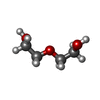Entry Database : PDB / ID : 5oazTitle Crystal structure of the Abl-SH3 domain at pH 7.5 Tyrosine-protein kinase ABL1 Keywords / Function / homology Function Domain/homology Component
/ / / / / / / / / / / / / / / / / / / / / / / / / / / / / / / / / / / / / / / / / / / / / / / / / / / / / / / / / / / / / / / / / / / / / / / / / / / / / / / / / / / / / / / / / / / / / / / / / / / / / / / / / / / / / / / / / / / / / / / / / / / / / / / / / / / / / / / / / / / / / / / / / / Biological species Homo sapiens (human)Method / / / / Resolution : 1.03 Å Authors Camara-Artigas, A. Funding support Organization Grant number Country Spanish Ministry of Economy and Competitiveness BIO2016-78020-R
Journal : to be published Title : Crystal structure of the Abl-SH3 domain at pH 7.5Authors : Camara-Artigas, A. History Deposition Jun 25, 2017 Deposition site / Processing site Revision 1.0 Jul 12, 2017 Provider / Type Revision 1.1 Sep 13, 2017 Group / Category / Item Revision 1.2 Jan 24, 2018 Group / Category Item / _entity_src_gen.pdbx_host_org_scientific_name / _entity_src_gen.pdbx_host_org_strainRevision 1.3 Jan 17, 2024 Group / Database references / Refinement descriptionCategory chem_comp_atom / chem_comp_bond ... chem_comp_atom / chem_comp_bond / database_2 / pdbx_initial_refinement_model Item / _database_2.pdbx_database_accession
Show all Show less
 Open data
Open data Basic information
Basic information Components
Components Keywords
Keywords Function and homology information
Function and homology information Homo sapiens (human)
Homo sapiens (human) X-RAY DIFFRACTION /
X-RAY DIFFRACTION /  SYNCHROTRON /
SYNCHROTRON /  MOLECULAR REPLACEMENT /
MOLECULAR REPLACEMENT /  molecular replacement / Resolution: 1.03 Å
molecular replacement / Resolution: 1.03 Å  Authors
Authors Spain, 1items
Spain, 1items  Citation
Citation Journal: to be published
Journal: to be published Structure visualization
Structure visualization Molmil
Molmil Jmol/JSmol
Jmol/JSmol Downloads & links
Downloads & links Download
Download 5oaz.cif.gz
5oaz.cif.gz PDBx/mmCIF format
PDBx/mmCIF format pdb5oaz.ent.gz
pdb5oaz.ent.gz PDB format
PDB format 5oaz.json.gz
5oaz.json.gz PDBx/mmJSON format
PDBx/mmJSON format Other downloads
Other downloads 5oaz_validation.pdf.gz
5oaz_validation.pdf.gz wwPDB validaton report
wwPDB validaton report 5oaz_full_validation.pdf.gz
5oaz_full_validation.pdf.gz 5oaz_validation.xml.gz
5oaz_validation.xml.gz 5oaz_validation.cif.gz
5oaz_validation.cif.gz https://data.pdbj.org/pub/pdb/validation_reports/oa/5oaz
https://data.pdbj.org/pub/pdb/validation_reports/oa/5oaz ftp://data.pdbj.org/pub/pdb/validation_reports/oa/5oaz
ftp://data.pdbj.org/pub/pdb/validation_reports/oa/5oaz
 Links
Links Assembly
Assembly
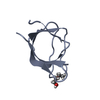

 Components
Components Homo sapiens (human) / Gene: ABL1, ABL, JTK7 / Plasmid: PET15B / Production host:
Homo sapiens (human) / Gene: ABL1, ABL, JTK7 / Plasmid: PET15B / Production host: 
 X-RAY DIFFRACTION / Number of used crystals: 1
X-RAY DIFFRACTION / Number of used crystals: 1  Sample preparation
Sample preparation SYNCHROTRON / Site:
SYNCHROTRON / Site:  ALBA
ALBA  / Beamline: XALOC / Wavelength: 0.97949 Å
/ Beamline: XALOC / Wavelength: 0.97949 Å molecular replacement
molecular replacement Processing
Processing MOLECULAR REPLACEMENT
MOLECULAR REPLACEMENT Movie
Movie Controller
Controller



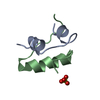

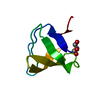
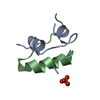
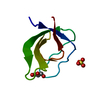

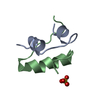
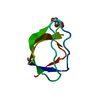


 PDBj
PDBj






